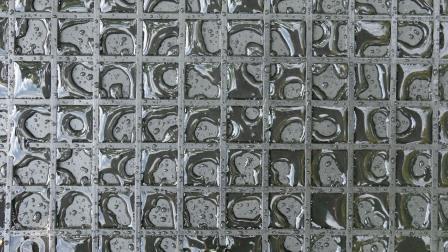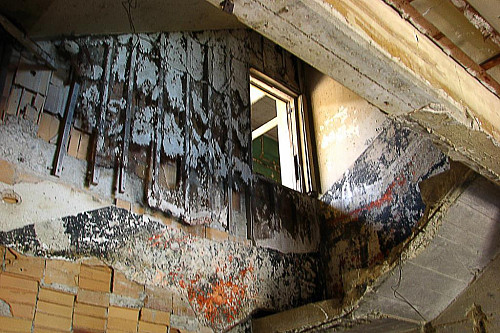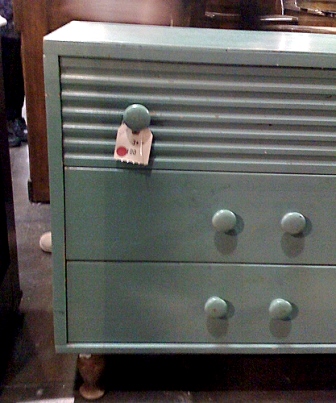What Can I Do About That Awful Moldy Smell?
 “What’s that horrible moldy smell in my bathroom? Eek!” Yes, I confess: I am terrified of mold.
“What’s that horrible moldy smell in my bathroom? Eek!” Yes, I confess: I am terrified of mold.
Sometimes I fear that having written so much about mold, mildew, and fungus, I imagine them lurking everywhere. However, this was no fantasy – that “unwashed socks” odor was very real. Now I had to track down the cause ... and get rid of it.
Why does mold cause such anxiety? Very often, it’s a sign of something seriously wrong in the home – water damage, which can wreak as much destruction as fire, swiftly and silently. A moldy smell might be your only obvious clue.
So as a smart homeowner, take the time to learn more about moldy odors and how to get rid of them effectively.
What does mold smell like?
Mold tends to have a disagreeably tangy, earthy, musty, or foul smell, as it releases mVOCs (microbial volatile organic compounds). The odor is sometimes compared to mushrooms, wet dog, or “eau de locker room.”
You might be able to spot mold growth in your home with the naked eye. However, molds and mildews often grow in hidden places like under a sink, where they’re not readily visible. That’s why being able to identify a moldy smell is important.
As well as smelling the mold, you may feel a tingling or irritation in your nose.
When is a moldy smell in your home most likely?
Early spring through fall is the commonest period for mold, which thrives in warm, moist conditions. Its preference: home temperature of 77-86 degrees together with relative humidity above 60 percent. To prevent mold growth, keep indoor humidity between 30 and 50 percent, with the help of your air conditioner’s dehumidifying feature or a freestanding dehumidifier.
Why is mold dangerous?
Breathing in mVOCs may cause or exacerbate respiratory illness (especially if you already suffer from asthma or nasal allergies), as well as other unpleasant symptoms such as skin rashes, eye irritation, headache, fatigue, nausea, and dizziness.
As far as your house goes, mold, fungus, and damp can affect materials from drywall to concrete, and may threaten the building structure itself. Past or present mold issues, together with any actions you’ve taken to remediate them, must be disclosed when you wish to sell your home.
Track down that moldy smell
The first step is to follow your nose. Go to the room where the moldy smell is strongest and see whether it stems from:
- Appliances – clothes washer or dishwasher
- Bathroom – towels, shower curtain, bathmat
- Houseplants -- specifically, their potting soil
- Items that have been wet --- carpet, books, etc.
- Pet bedding
- Secondhand purchases -- vintage furniture, for example
- Trash cans, wastebaskets, or recycling bins
DIY tips to get rid of that moldy smell
You can treat many of these problems yourself:
- Wash fabric items in hot water (check the care label first).
- Put musty old paper or wood items outdoors in the sunshine for a day or two.
- Re-pot seriously moldy houseplants.
- Do a little heavy-duty house cleaning, for example, scrubbing moldy-smelling garbage cans or vegetable drawers.
- Try setting out an open container of natural deodorizer -- activated charcoal, white vinegar, or baking soda.
- Ventilate. Open windows and turn on a fan to air out the room.
- Clean small patches of mold (less than 25 square feet) on hard surfaces such as walls, countertops, or ceiling with soapy hot water and a bristle brush, wearing rubber gloves and a breathing mask. Dry thoroughly.
- Never apply paint on top of active mold. However, you’ll be able to paint over the formerly moldy area after cleaning and completely drying. Use mildew-resistant paint.
It’s time to hire a mold removal professional when...
- you can’t locate where the moldy smell is coming from
- cleaning doesn’t get rid of the odor
- your home has moldy areas totaling more than 25 square feet
- you see warning signals such as persistent damp patches or water damage
OR - the mold is a result of sewage or other contaminated water (“black water”)
You might also need the help of other professionals to locate and repair the moisture source, such as a plumber for a water leak, a roofer for a hole in your roof, or an HVAC technician to get rid of mold in your ductwork.
The cost to get rid of mold may be covered by your homeowners insurance – if the mold results from a peril included in your policy, such as storm damage or a burst plumbing pipe. Check with your insurer before hiring a contractor.
PS
In my case, the moldy smell was in the bathroom. After some intense detective work, I found it was coming from the underside of my bathtub’s anti-skid mat. Whew! I got off easy... this time.

Laura Firszt writes for networx.com.
Looking for a Pro? Call us (866) 441-6648







